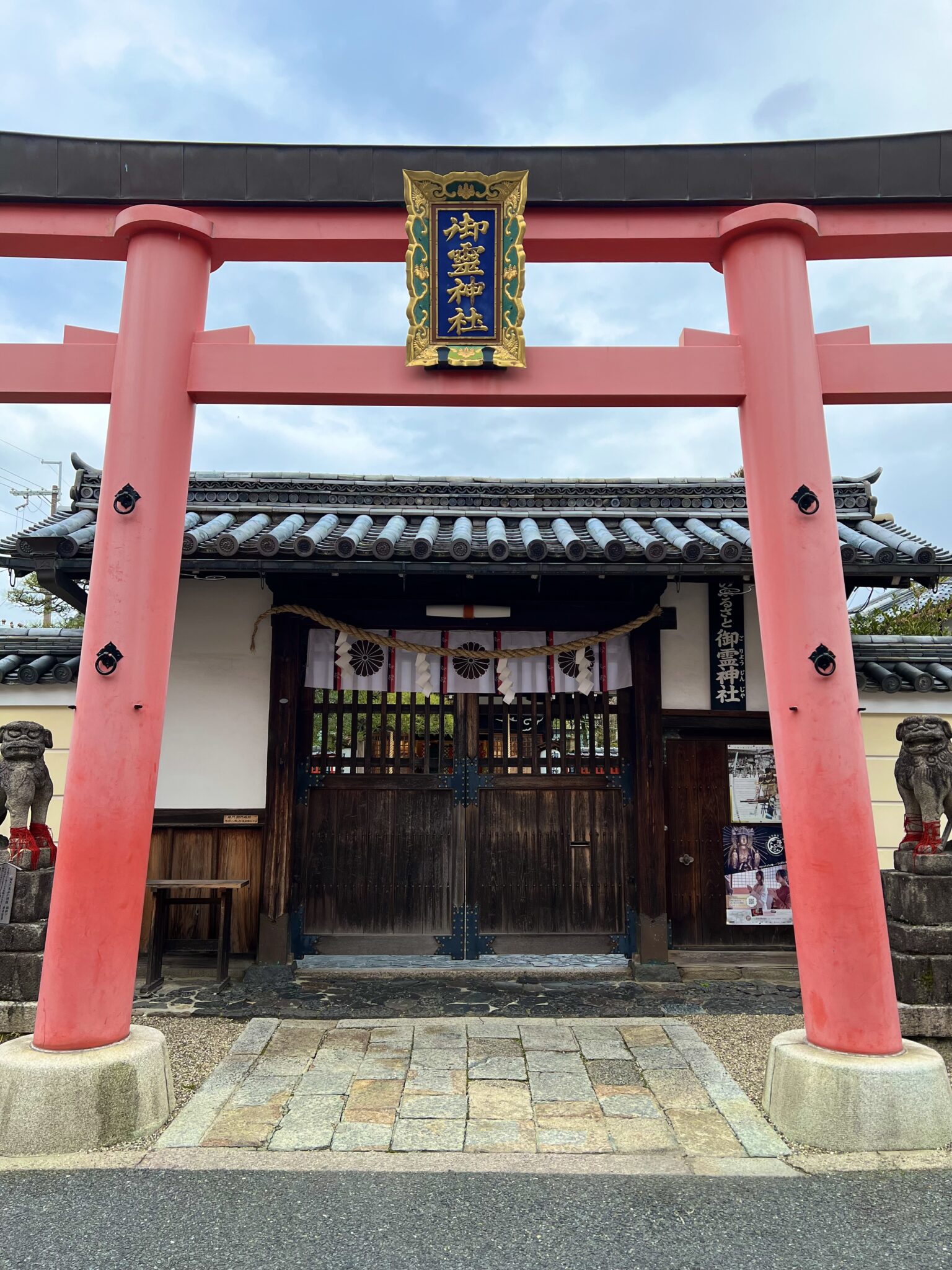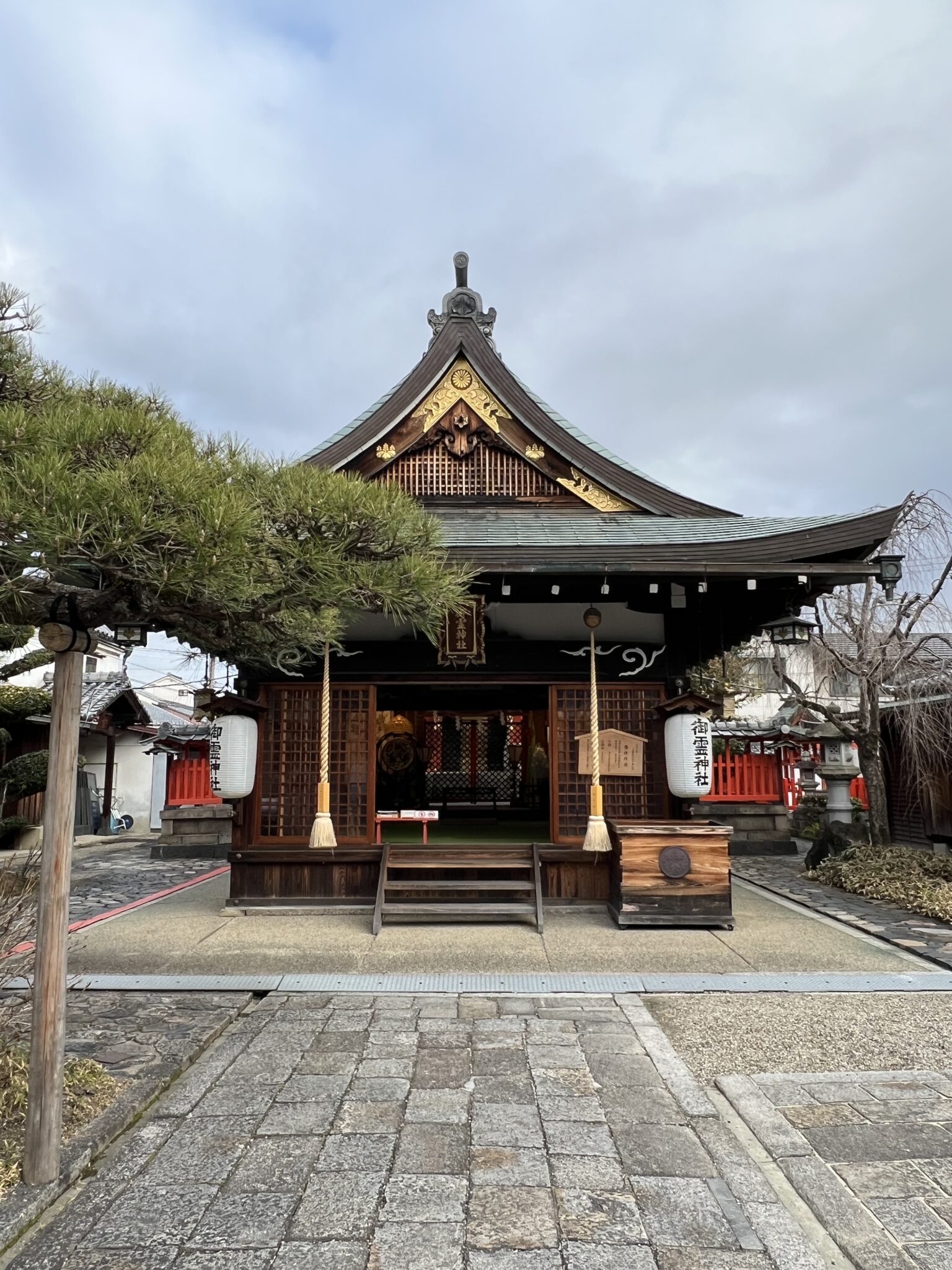Goryō Shrine was founded in 800 (the 19th year of the Enryaku era) by imperial order of Emperor Kanmu. It is located in the heart of Naramachi, bustling with travelers, and still quietly enshrines the spirits of Empress Inoue and Prince Sawara. In my opinion, Empress Inoue (or Igami) and Prince Sawara represent the two most prominent vengeful spirits of the Nara period (I have written about Prince Sawara in another article).
During the Nara period, Empress Inoue likely experienced one of the most tragic lives. Initially serving as a high priestess of Ise, her life took a dramatic turn when she married Emperor Kōnin. The only son she bore during her life became entangled in the imperial succession struggle with Prince Yamabe (later Emperor Kanmu). She was accused of a crime she did not commit, and both she and her son were stripped of their status and imprisoned. It is believed they were either assassinated or forced to commit suicide while in exile. Afterward, Emperor Kanmu was continually haunted by the vengeful spirits of Empress Inoue and Prince Sawara.

Empress Inoue’s Tragic Life
Empress Inoue was born in 717 (the first year of the Yōrō era) as the first princess of Emperor Shōmu and became the high priestess of Ise at the age of five. It is believed that this decision was influenced by the Fujiwara clan, aiming to keep her away from the capital so she would not bear sons who could rival Abe Imperial Princess (later Empress Kōken and Empress Shōtoku), the daughter of Kōmyōshi. In 744 (the 17th year of the Tenpyō era), Inoue’s full brother, Prince Asaka, passed away, leaving Emperor Shōmu without a male heir. As a result, Inoue was relieved of her duties as the high priestess and was married off to Prince Shirakabe (later Emperor Kōnin). At that time, Prince Shirakabe was 36 years old, and Inoue was around 30. Inoue gave birth to Princess Sakeito at 37 and to Prince Osabe at 45, which was considered quite old for childbirth in those days. One can only imagine how she must have felt, having been raised as a high priestess only to suddenly be married off to an unfamiliar man.
When Empress Shōtoku (Emperor Shōmu’s daughter) passed away in 770 (the 4th year of the Jingo-Keiun era), the imperial lineage shifted to the descendants of Emperor Tenji, and Inoue’s husband, Prince Shirakabe, ascended the throne as Emperor Kōnin. Due to her noble lineage, Inoue became empress, and in 771, her 10-year-old son, Prince Osabe, was named crown prince. However, the following year, Empress Inoue was accused of cursing Emperor Kōnin, leading to her deposition as empress, and her son Osabe was also removed as crown prince. That same year, Fujiwara Nagate, who had been their main supporter, passed away as well. In Osabe’s place, Prince Yamabe (later Emperor Kanmu) was named crown prince. In 775 (the 6th year of the Hōki era), both Empress Inoue and Prince Osabe died on the same day in confinement in Uchi District, Yamato Province (modern-day Gojō City), in what was a mysterious and unsettling event. It is strongly believed that Fujiwara Yoshitsugu and Fujiwara Momokawa, who sought to make Prince Yamabe emperor, were involved in the power struggles within the Fujiwara family.
Princess Inoue was tragically caught up in the imperial lineage and power struggles, manipulated and ultimately driven to her death along with her child. She is now enshrined as a vengeful spirit.

Shrine Ground
As you walk through the narrow alleys of Naramachi and turn an ordinary corner, you’re suddenly surprised by the sight of an impressive red torii gate and gate standing right in front of you. It’s always a delightful shock that catches you off guard. On both sides of the torii, there are guardian lion-dogs (komainu) with numerous red strings tied to their front paws, a unique feature of Goryō Shrine, which piques interest.
On this particular day, I set out early on my bicycle and arrived at Goryō Shrine just before 8 a.m. While I was waiting at the gate, the shrine priest kindly opened it a little earlier than usual.
The shrine grounds are meticulously maintained, creating a serene and pure atmosphere. After purifying myself at the temizuya (water basin), I prayed at the Haraedo-sha to cleanse my body and spirit before proceeding to the main hall.
At the front of the main hall, Empress Inoue, Prince Osabe, and Kotoshironushi-no-Mikoto are enshrined. To the left of the main hall, Prince Sawara, Fujiwara Hirotsugu, and Fujiwara Lady are enshrined, while on the western side, Prince Iyo, Tachibana no Hayanari, and Bun’ya no Miyatamaro are worshiped. All of these individuals are said to have lived tragic lives and are now venerated as vengeful spirits.
Within the shrine grounds, there are also many other smaller shrines:
- Shusse Inari Shrine: Known as a deity of matchmaking. Many people visit Goryō Shrine specifically to pray here.
- Wakamiya Shrine
- Mizuhiruko Shrine
…and more.

Enshrined Deities
Empress Inoue, Crown Prince Osabe, Kotoshironushi-no-Kami, Prince Sawara, Fujiwara no Hirotsugu, Lady Fujiwara, Prince Iyo, Tachibana no Hayanari
Guardian Lion-dogs
On the front paws of the guardian lion-dogs (komainu) that protect both sides of the torii gate, many red strings are tied. This method of wish-making seems to date back to the Edo period. It is done with wishes such as “to stop runaway people or those frequenting bad places,” “to prevent children from being spirited away,” and “to keep lovers from leaving.” The red strings are still available for purchase at the shrine today, and now they are tied to pray for good relationships. The red string is tied in a special way known as “Kanou-musubi” (wish-fulfilling knot).

Goryo Shines and Ancient Roads in Nara
In ancient times, Nara had three main roads extending north from Asuka. The eastern road was called “Kamitsu Michi,” the central one “Nakatsu Michi,” and the western one “Shimotsu Michi.” Emperor Kanmu built Goryō shrines along each of these roads for protection. The Kamitsu Michi had the Shrine of Emperor Sudo (Prince Sawara), the Nakatsu Michi had Inoue Goryō Shrine, and the Shimotsu Michi had the Prince Osabe Goryō Shrine, which enshrined Prince Osabe, the son of Empress Inoue. The Inoue Goryō Shrine is the predecessor of the current Goryō Shrine in Naramachi.
The role of these shrines was to protect Nara from plagues and other epidemics prevalent at the time. Of these three shrines, the exact location of the Prince Osabe Goryō Shrine is now unknown.

Access
〒630-8321 奈良市薬師堂町24番地
御霊神社社務所 TEL 0742-23-5609
開門時間 午前8時~午後4時半

